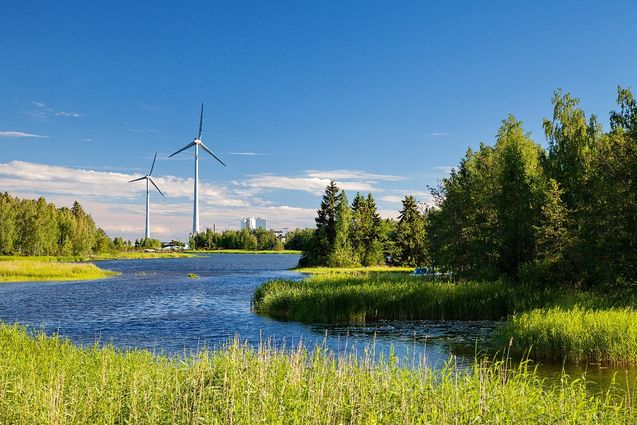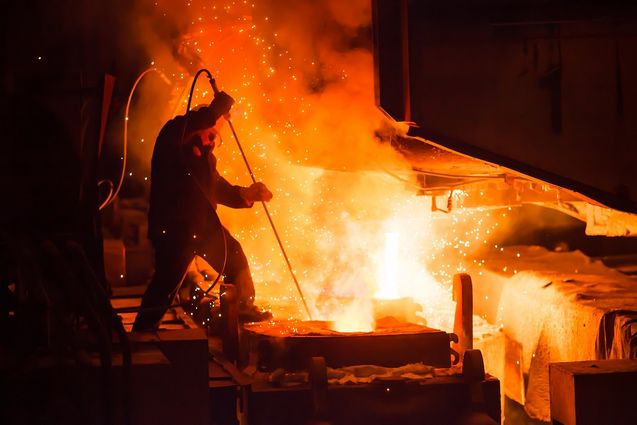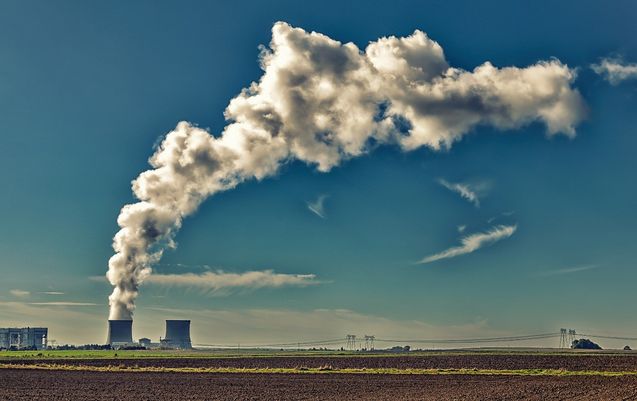The European Union is accelerating its transformation into a hydrogen economy. It is time for companies to update their strategies to meet the new reality and make use of new opportunities.
The EU has previously stated that it intends to become a hydrogen superpower. In the hydrogen strategy published last year, the European Commission set strategic targets for the installation of at least 6 GW of hydrogen electrolysis equipment by 2024 and at least 40 GW of hydrogen electrolysis equipment by 2030.
This summer the Commission published its ‘Fit for 55’ package, a proposal to get the EU on track to meet its target of reducing greenhouse gas emissions by 55% by 2030. The package promotes the use of hydrogen in several ways.[1]
The Energy Taxation Directive sets preferential tax rates for the use of renewable and low-carbon hydrogen for end consumers.
The EU Emissions Trading System (EU ETS) proposal includes the production of hydrogen with electrolysers under the EU emissions trading scheme, making renewable and low-carbon facilities eligible for free allowances.
The policy framework for hydrogen will be completed in December. The Commission will put forward proposals for hydrogen and the decarbonisation of gas markets, to set the regulatory approach for these sectors.
The revised Renewable Energy Directive extends the EU-wide certification system for renewable fuels to include hydrogen and aims to decarbonise industry and heavy-duty and long-distance transport with concrete targets.
The carbon dioxide standards for cars and vans set technology-neutral targets to reduce emissions by 2030 and 2035. Hydrogen can be part of the solution, in particular for heavy-duty vehicles.
The Alternative Fuels Infrastructure Directive will also support the development of alternative fuels infrastructure, including refueling points for hydrogen. A refueling station will be available every 150 km along the TEN-T core network and in every urban node.
The FuelEU Maritime proposal covers all renewable and low-carbon fuels in maritime transport, including decarbonised hydrogen and decarbonised hydrogen-derived fuels (including methanol and ammonia).
Companies are getting ready
At the same time, much has already been accomplished in the European market. Companies that anticipated this turning point updated their strategies ahead of time and are quite likely to increase their market share soon. Several such companies can be found in the European steel industry. SSAB, for example, started developing fossil-free steel technology several years ago. The company already has customers for its premium steel made with hydrogen, even though full commercial production is still four years away.
Following the example of SSAB, practically all steel manufacturers in Europe have started their research and development for the production of fossil-free steel. Demand for this product will be significant despite its price, which is higher than that of steel made traditionally with coke, made by heating coal. The message to European companies is clear: get ready for the hydrogen era if you have not already done so. Hydrogen will be here faster than expected. This is evident from fast-rising carbon emission prices, for example.[2]
Germany speeds up its hydrogen economy everywhere
As the largest industrial power of the EU, Germany drives the development of the hydrogen economy in all of Europe. The country plans to invest more than €8 billion to fund large-scale hydrogen projects as it aims to reach carbon neutrality by 2045.[3] Even more funding will be available; the total federal state support will exceed €10 billion.
Sixty-two German projects supporting chemical, steel and transport industries are part of a joint European hydrogen project collection called Hydrogen-IPCEI. An IPCEI, short for ‘Important Project of Common European Interest’ is a mechanism for finding aid compatible with the internal market.[4] IPCEIs are large projects that address a market failure or other important systemic failure in a European context based on common European interests.[5] Hydrogen-IPCEI follows two existing IPCEIs, focused on battery research and production.[6]
According to the country’s National Hydrogen Strategy, electrolysers with a capacity of 5 GW are to be installed in Germany by 2030. They will produce approximately 14 TWh of green hydrogen using 20 TWh of electricity, which accounts for approximately 15% of the hydrogen consumed in Germany.[7]
These projects clearly show the importance of Germany to the European hydrogen economy. The industrial heart of Europe needs large amounts of hydrogen – far more than Germany can produce by itself. Who will produce the required hydrogen?
Denmark captures the wind
Germany will produce most of its fossil-free hydrogen close to the sea and in offshore wind farms. Denmark plans to do the same, but on an even larger scale. After pioneering wind energy and being a leader in this field for decades, Denmark is now preparing to construct the world’s first ‘energy islands’. Offshore wind turbines around these islands will be able to supply green electricity to at least five million households.[8] The plan envisages the creation of an artificial island in the North Sea as a hub for offshore wind farms supplying 3 GW of energy with a long-term expansion potential of 10 GW. The energy island of the Baltic Sea will be Bornholm, where the island’s facilities will serve as a hub for offshore wind farms generating 2 GW of energy. A portion of this energy will be used for the production of hydrogen to be sold abroad.
Danish pioneering work in wind energy has already borne plenty of fruit. The leader in the global wind power market is currently the Danish Ørsted.[9] This company is the world’s largest developer of offshore wind power.[10] It does not manufacture turbines, but it develops, constructs and operates offshore and onshore wind farms.[11]
Norway will master the seas
Norway enjoys an enviable position as an energy paradise. The country gained its wealth mostly via its enormous hydrocarbon resources but is now shifting its focus to renewable production. Norway’s extensive hydropower resources constantly feed affordable energy abroad, as the country is part of a joint Nordic power market with Sweden, Denmark and Finland.[12] It also has interconnectors connecting it with the electricity systems of other countries. Two new interconnectors with Germany[13] and the UK[14] were recently completed. Using its abundant wind and hydropower, Norway has major plans for the development of its hydrogen industry.[15]
Not only is Norway active in general hydrogen production, proving itself to the rest of the world with big players like Nel,[16] as a traditional maritime industry nation, it is also poised to become a leader in the development of sustainable shipping technologies. The list of Norwegian pilot projects is already impressive. For example, the world’s first liquid hydrogen fuel cell cruise ship is planned to set sail in Norway’s fjords by 2023.[17] In addition, an 88-meter long, zero-emission cargo ship is to commence operations in 2024[18] and Denmark and Norway are teaming up to build the world’s largest hydrogen ferry, which will be operational in 2027.[19]
Steel makes the difference in Sweden and Finland
Both Sweden and Finland are fortunate to have access to an abundance of zero-emission energy. Traditionally, these countries have relied largely on their extensive hydropower resources. Both countries have also generated large amounts of energy using nuclear power.
Sweden and Finland also both have coastlines with plenty of wind to make wind turbines work efficiently as well as low population densities and thus abundant space for new wind turbines that will not disturb local populations. The northern arm of the Baltic Sea in particular creates a local surplus of wind energy that can be exported elsewhere in Europe, potentially in the form of hydrogen.
The steel industry ensures the region’s access to a large-scale hydrogen economy. Steel producer SSAB and iron ore producer and energy company Vattenfall have been operating their HYBRIT pilot plant for fossil-free steel in Luleå, a city in northern Sweden. Commercial-volume production is set to begin in 2025.[20] Several other zero-emission steel projects have been launched in Sweden, and SSAB, as the major iron ore-based steel producer of Finland, will turn to hydrogen in the 2030s and 2040s on the eastern coast of the Bay of Bothnia.
To supply its industry with sufficient hydrogen, Sweden needs to build a large hydrogen pipeline from north to south, according to a recently published report.[21] In the European Hydrogen Backbone project, Gasgrid Finland has envisioned a similar hydrogen pipeline along the Finnish coast.[22] Regardless of the details of the final products, these two planned pipelines will be connected at the Swedish-Finnish border.
The region already boasts excellent infrastructure with international ports, existing demand for hydrogen from large chemical and other industries and several universities with technical expertise, in addition to its natural advantages in clean energy production. A range of companies in the hydrogen business exists at present in the region, from giants like energy company Fortum/Uniper[23] and multisector engineering company Wärtsilä[24] to rising stars like Hycamite,[25] which produces hydrogen by splitting methane using thermo-catalytic methods, and Aurelia Turbines,[26] whose small gas turbines can use hydrogen as a fuel. Companies in the hydrogen business around the northern arm of the Baltic Sea have teamed up to form BotH2nia, a collaboration brand and network for building a large-scale hydrogen economy around the Gulf of Bothnia.
A growing Hydrogen economy in the Rhine Delta
In terms of industry, the most important river in Europe is the Rhine. Rotterdam and Antwerp are the main ports in the Rhine-Meuse-Scheldt Delta. Therefore, Rotterdam and Antwerp Port Authorities are currently working with various partners towards the introduction of a large-scale hydrogen network across the port complexes, making the Delta an international hub for hydrogen production, import, application and transport to other countries in Northwest Europe.
The range of projects planned for the area is extensive. For example, in the Netherlands, the operation of the hydrogen pipeline in Rotterdam is set to commence in 2024. Also in Rotterdam, Uniper is planning is to realize a green hydrogen plant by 2025 with a capacity of 100 MW, later to be expanded to 500 MW. In addition, a blue hydrogen plant is slated to start operating by the end of 2026. At this plant, hydrogen will be produced from natural gas while carbon dioxide will be captured with CCS technologies and stored under the North Sea. The Port of Rotterdam is also already investigating the import of hydrogen from a large number of countries around the world, including Iceland and Australia.
The Netherlands will need at least need 3.5 Mt of hydrogen per year for its own use by 2050[27] and will need to support the needs of the Ruhr area and other European industrial regions as well. The growth of a vast hydrogen business can already be observed in the Delta.
France goes atomic
France also has ambitious plans for hydrogen. The core objective in France is to have 20-40% of its total hydrogen and industrial hydrogen consumption sourced from low-carbon and renewable hydrogen by 2030. To support the development of low-carbon and renewable hydrogen, the French State will invest €7 billion by 2030.[28]
One unique aspect of France’s hydrogen plans is the country’s interest in developing hydrogen production using nuclear power. France derives approximately 70% of its electricity from nuclear energy, due to a long-standing policy based on energy security. France is the world's largest net exporter of electricity due to the very low cost of generation. The country gains over €3 billion per year from this export.[29]
With this background, it is evident that France would be a leader in hydrogen production with nuclear power. However, the French Government’s current policy aims to reduce the share of nuclear energy in the national energy mix to 50% by 2035. The impact of this decision on nuclear energy-based hydrogen production will become apparent in the future.
On the other hand, because France’s electricity production is already low in CO₂ emissions, the country’s main targets for reducing emissions with hydrogen may turn to be in areas other than electricity production. In France, transport is the greatest emitter of CO₂, producing approximately 30% of the country’s total CO₂ emissions.[30] The automotive and aviation industries are among the strongest industries in the national economy. Therefore, Airbus and other companies are expected to make great innovations in that area. Airbus is already the leading company in efforts to develop large-scale hydrogen-powered airplanes.[31]
Portugal enjoys the sunshine
It’s not just people who enjoy the sunshine in Portugal; the hydrogen economy likes it, too. Most of all, solar cells love the southern sun.
Portugal was the first country in the world to aim for carbon neutrality by 2050.[32] Steps have been taken towards this goal. Portugal will start producing hydrogen with electrolysis by the end of 2022 and already has private investments worth approximately €10 billion lined up for eight projects, according to Joao Matos Fernandes, Portugal’s Minister of Environment and Energy Transition.[33]
Portugal relies on several advantages to meet its goal: a well-equipped deep-water port in Sines, the availability of public land for the installation of the hydrogen industrial complex, a modern natural gas supply network and most of all, a price for solar power that is among the lowest in the world. In southern Portugal, solar irradiance reaches 1 900 kWh per square meter. By comparison, in northern Germany, it reaches only 1 000 kWh per square meter.[34]
There is good reason to believe that Portugal will be one of the countries supplying Germany with zero-emission hydrogen in the future. Portugal and the Netherland have already agreed to begin the transport of fossil-free hydrogen from Portugal to the port of Rotterdam and from there further to clients in the region.
Spain uses EU recovery funds
Just like Portugal, Spain is also planning to turn sunlight into energy and export it to clients abroad.
The Spanish government plans to invest €1.5 billion in hydrogen. That money is to be drawn from the EU pandemic recovery fund. It is also planning for €9 billion of private sector investments in related technologies by 2030.[35] Also by 2030, Spain is aiming to have 42% of renewable energies as part of its energy mix and have 74% of its electricity generated with renewables.[36]
Spain – just like Portugal – is not blessed only with sunshine. Both countries have plenty of wind energy as well and plan to use it. For instance, the Spanish energy companies Naturgy and Enagas announced this spring that they are studying the production of renewable hydrogen from a 250 MW floating offshore wind farm and a 100 MW onshore wind farm in Asturias, in northern Spain.[37]
The wind farms’ purposes include more than just the production of electricity. They are also meant to turn the country into a technology provider for the rest of the world. Spain has done well in this field. As an example, power solutions company Cummins has announced plans to build a €50 million PEM electrolyser plant for the production of green hydrogen in Castilla-La Mancha.[38]
Italy invests with big budgets
Like Spain, Italy is both enjoying the flow of solar energy and money from the EU’s €750 billion recovery fund. It wants to use both as well as its central location in the Mediterranean to become a hub for the hydrogen trade. For instance, Italy plans to raise up to €1.5 billion to build a 1 gigawatt-per-year electrolyser factory as part of its plans to become a European green hydrogen hub. Rome plans to invest €450 million in electrolyser factories, and it expects private investors to contribute an additional €1 billion.[39]
Italy plans to build a large infrastructure to carry hydrogen inside its territory, from northern Africa and to the rest of Europe. Europe's biggest gas pipeline operator Snam has already ordered its first supply of steel pipes fully certified for up to 100% of hydrogen for its natural gas transport network in Italy. These new high-pressure pipes will be used to replace old ones that Snam is retiring along its 33 000 km domestic network.[40] Snam has experimented with a 10% mix of hydrogen in part of its grid and has previously said 70% of its natural gas network already consists of hydrogen-ready pipes.
Railways will get their share of infrastructure investments as well. Italian public railway company FNM will build hydrogen-powered trains to replace existing diesel trains.[41]
The rest of the EU is waking up
Southeast and eastern Europe are lagging behind northern and western Europe in efforts to enter the hydrogen era. However, there are several strong promising signs in this area, as well. For instance, the Polish government is a leader in efforts to keep the coal industry going. Poland generates around 70% of its electricity with coal, more than any other European country.[42] Slowly but surely, however, times are changing. In June this year, Poland’s Łódź region announced that the European Union’s most polluting coal plant, Bełchatów, will close by 2036, followed by its mines by 2038.[43]
I recently met a range of Polish companies in the hydrogen business in a webinar organised by the Finnish and Polish hydrogen clusters. Poland has a long coastline with ideal locations for wind power. It has large domestic markets as well as proximity to hydrogen-hungry German markets. It has salt caverns perfect for underground hydrogen storage, excellent engineers and a lot of experience in the energy business. Several companies are already entering the hydrogen business and government support for exploiting new energy technologies is growing. Expect news coming from Poland soon.
Baltic countries have that same windy coast. Their special incentive for finding new energy solutions can be found in their desire to be rid of the legacy of the former Soviet Union. The Baltic states are getting ever closer to plugging into the EU power grid, aiming to end their dependence on the Russian grid.[44]A new nuclear power station close to the border has made Lithuania decide to stop its electricity trade with Belarus.[45] Estonia wants to get rid of its polluting oil shale electricity generation which accounts for over 70% of the country’s electricity production.[46] These countries will turn to their vast wind power potential, and I am positive we will soon hear hydrogen-related news coming from there, as well.
[1] https://www.world-nuclear.org/information-library/country-profiles/countries-a-f/france.aspx
[2] https://www.terega.fr/en/newsroom/editorial/the-challenges-of-developing-the-hydrogen-industry-in-europe
[3] https://www.reuters.com/business/aerospace-defense/airbus-tells-eu-hydrogen-wont-be-widely-used-planes-before-2050-2021-06-10/
[4] https://www.europeanfiles.eu/energy/the-portuguese-hydrogen-strategy-to-decarbonise-its-economy-the-project-to-produce-green-hydrogen-by-electrolysis
[5] https://www.reuters.com/article/us-portugal-hydrogen-minister-exclusive-idUSKBN2AP2H4
[6] https://www.dw.com/en/green-flamingo-portugal-hopes-to-export-green-hydrogen-to-eu/a-55673203
[7] https://www.thebusinessyear.com/hydrogen-potential-and-green-energy-in-spain-2021/focus
[8] https://www.euractiv.com/section/energy/news/spain-positions-itself-to-be-europes-green-hydrogen-hub/
[9] https://www.icis.com/explore/resources/news/2021/03/01/10611535/over-540mw-of-green-hydrogen-capacity-announced-in-spain-during-february
[10] https://www.powerengineeringint.com/hydrogen/cummins-to-build-500mw-green-hydrogen-plant-in-spain/
[11] https://www.reuters.com/business/sustainable-business/hydrogen-hopeful-italy-seeks-up-15-bln-euros-giant-electrolyser-plant-2021-06-18/
[12] https://www.nasdaq.com/articles/italys-snam-buys-first-hydrogen-certified-pipes-for-gas-network-2021-06-03
[13] https://ihsmarkit.com/research-analysis/second-italian-green-hydrogen-cluster-wins-funds.html
[14] https://www.nytimes.com/2021/05/30/world/europe/poland-czech-coal-mine-environment.html
[15] https://emerging-europe.com/news/poland-to-close-europes-dirtiest-coal-fired-power-plant/
[16] https://www.euractiv.com/section/global-europe/news/baltics-step-closer-to-plugging-into-eu-power-grid-ending-dependence-on-russia/
[17] https://www.icis.com/explore/resources/news/2019/10/14/10428121/power-perspective-baltics-divide-over-electricity-trade-with-russia
[18] https://www.iea.org/countries/estonia
[19] https://www.fortum.com/about-us/blog-podcast/forthedoers-blog/hydrogen-economy-coming-sooner-or-later
[20] https://www.wartsila.com/energy/power-to-x-and-future-fuels
[21] https://hycamite.com/
[22] https://aureliaturbines.com/
[23] https://energypost.eu/the-netherlands-a-blue-hydrogen-economy-now-will-ease-a-transition-to-green/
[24] https://www.wfw.com/articles/the-french-hydrogen-strategy/
[25] https://nelhydrogen.com/about/
[26] https://www.rechargenews.com/transition/world-s-first-liquid-hydrogen-fuel-cell-cruise-ship-planned-for-norway-s-fjords/2-1-749070
[27] https://www.cnbc.com/2021/06/24/statkraft-lined-up-to-provide-green-hydrogen-for-zero-emission-ship.html
[28] https://www.euractiv.com/section/energy/news/denmark-and-norway-team-up-to-build-worlds-largest-hydrogen-ferry/
[29] https://www.ssab.com/company/sustainability/sustainable-operations/hybrit-phases
[30] https://www.marketscreener.com/news/latest/Press-release-A-new-report-shows-that-in-order-to-achieve-the-climate-goals-Sweden-is-facing-an-ex--35677059/
[31] https://gasforclimate2050.eu/ehb/
[32] https://ens.dk/en/our-responsibilities/wind-power/energy-islands/denmarks-energy-islands
[33] https://orsted.com/en/our-business/offshore-wind
[34] https://www.ft.com/content/99150262-d368-11e6-b06b-680c49b4b4c0
[35] https://orsted.com/
[36] https://energifaktanorge.no/en/norsk-energiforsyning/kraftmarkedet/
[37] https://www.tennet.eu/our-grid/international-connections/nordlink/
[38] https://northsealink.com/
[39] https://www.regjeringen.no/en/aktuelt/the-norwegian-hydrogen-strategy/id2704774/
[40] https://ec.europa.eu/commission/presscorner/detail/en/fs_21_3676
[41] https://ember-climate.org/data/carbon-price-viewer/
[42] https://www.reuters.com/world/europe/germany-invest-around-10-bln-hydrogen-projects-2021-05-28/
[43] https://www.hydrogen4climateaction.eu/whats-an-ipcei
[44] https://ec.europa.eu/growth/industry/policy/supporting-clean-hydrogen/ipceis-hydrogen_en
[45] https://www.electrive.com/2020/12/18/23-european-nations-launch-ipcei-hydrogen/
[46] https://energypost.eu/germanys-plans-to-be-a-hydrogen-leader-producer-consumer-solutions-provider/





